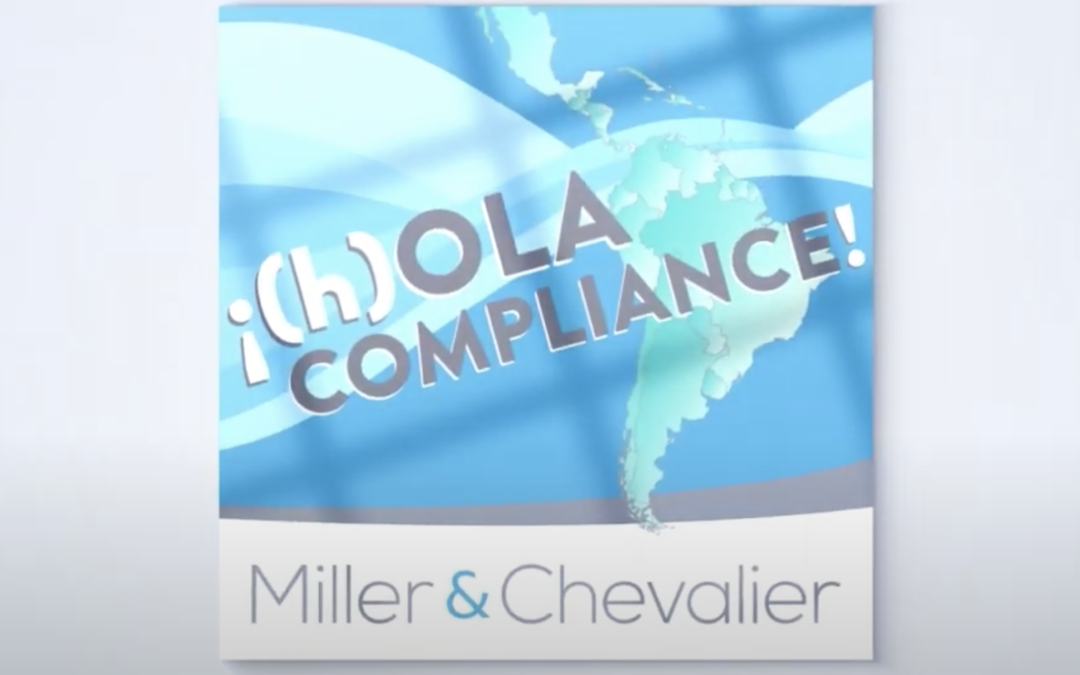


La Ola de la FCPA Llega a Guatemala, Honduras, y El Salvador | ¡(H)Ola Compliance!

Individuos Expuestos bajo la FCPA | ¡(H)Ola Compliance!

Why companies and compliance officers need to adopt ESG criteria
From “Governance” and with a focus on anti-corruption.
Environmental, Social and Governance (ESG); impact investing and sustainability are terms that companies may consider to be outside the scope of their compliance and ethics program.
However, ESG principles can help companies, fiduciaries and compliance officers fulfill their responsibilities.
Towards a new governance
ESG governance moves away from the traditional understanding of directors’ fiduciary responsibility, based on a hierarchical control model and the proper management and administration of the company.
Governance means starting to move towards a new style of corporate governance that is reflected in greater cooperation between the board and third parties and regulators, covering multiple aspects, including business ethics and transparency; measures to combat bribery, corruption and money laundering; adequate financial management and tax compliance; control of donations to the private and public sector, including political parties; internal audits and controls on regulatory compliance; and respect and safeguarding of the rights and interests of stakeholders, from shareholders and investors to customers and employees.
Importance of anti-corruption programs
Corruption is one of the main ESG issues that investors and financiers analyze when making their decisions, whether for making contributions or even in mergers and acquisitions. In addition to this, there are demands from all over the world and from all sectors for greater transparency, regardless of local regulations.
Therefore, proper corporate governance must consider the implementation of an effective program to manage bribery and corruption risks that may affect the company. These risks not only expose the company to civil, administrative or criminal liability, but also to operational and reputational risks that nowadays acquire an unprecedented importance under the influence of globalization and the use of new technologies.
From the point of view of shareholders and investors
Companies are beginning to see that proper management and planning of corporate governance could have a positive effect on profitability and productivity in the medium and long term.
These competitive advantages will result in companies that are more attractive to shareholders and investors, who are beginning to identify and evaluate the risks of exposure to ESG factors as one of the fundamental aspects in their decision making.
With the evolution and development of this issue, there is an important opportunity for companies that are working on strengthening their anti-corruption programs within the framework of their ESG policies.
Concrete actions that companies can take to incorporate ESG governance factors are as follows:
Analyze the processes the company has in place to identify where there are opportunities for improvement and what factors may be impeding progress.
Create a risk matrix to identify recurring and residual risks.
Design an anti-corruption program based on the risks detected in order to manage them efficiently.
Design a code of ethics and an appropriate anti-corruption policy.
Conduct due diligence on employees, customers, suppliers and business partners, with emphasis on the ESG factors that the company wants to implement.
Enable whistleblower hotlines within the framework of a process that ensures guarantees and protection to the whistleblower.
Train employees and senior staff.
Conduct recurring audits on the different aspects of the program in operation.

Compliance for the prevention of gender-based violence in higher education institutions
On September 15, Law No. 21.369 was published in the Official Gazette, which regulates sexual harassment, violence and gender discrimination in the field of Higher Education. This responds to the different manifestations that have been carried out in recent years in the different houses of study throughout the country, in which protocols and sanctions were demanded in the face of these cases.
Article 1 of the law clearly establishes the objective of the law: to promote policies aimed at preventing, investigating, sanctioning and eradicating sexual harassment, violence and gender discrimination; to protect and repair the victims; to establish safe environments free of sexual harassment, violence and gender discrimination for all persons attending academic communities of higher education.
The law requires higher education institutions to have a comprehensive policy against sexual harassment, violence and gender discrimination, which must contain a prevention model and a sanction model. In addition, it is required that all levels of the higher education institution participate in the drafting of the policy.
Although many universities and professional institutes have been adopting policies in case of sexual harassment, violence and discrimination, Law No. 21,369 establishes a series of requirements that the policies must contain, which will be subject to control by the authority, so in more than one case, it will imply modifying the existing policies.
For example, Article 5 of the law establishes the measures to be included in the prevention model: diagnosis of activities carried out within the respective institution that may imply a risk; set of measures aimed at preventing risks; awareness and information campaigns on human rights, sexual harassment, violence and gender discrimination; training for staff and academics; incorporation of human rights, sexual harassment, gender violence and discrimination content in curricular plans; and inclusion of the policies in the induction process.
Higher education institutions will have until September 15, 2022 to implement the prevention models and sanction models and, once implemented, they will have 90 days -extendable for 30 days- to improve the models and staff orientation or training.
The Superintendence of Higher Education has been emphatic that it will sanction those schools that do not comply with a comprehensive policy against sexual harassment, violence and discrimination, as established by law, to such an extent that they will not be able to obtain institutional accreditation.
All of the above translates into an exhaustive process to be carried out by higher education institutions. The implementation of a prevention and sanction model in accordance with the requirements established in Law No. 21,369 aims to prevent, sanction and eradicate sexual harassment, gender violence and discrimination, and ensure safe environments.
This is possible to the extent that all the stages involved in this process are fulfilled, and understanding that the work does not end once the prevention and sanction models are drafted, but that the implementation, training and constant review and updating are key to ensure the objectives established by law.

Compliance and Ethics obligations must be incorporated into the Internal Regulations in order to be enforceable on employees.
On May 31, the Labor Department ruled on the enforceability of the obligations established in the company’s Code of Ethics, when it has not been formally incorporated into the Internal Regulations on Order, Hygiene and Safety.
The pronouncement arises from the request presented by a union to refer to two questions:
Whether the company should incorporate the procedures, regulations and provisions of the Code of Ethics that govern the different companies of the holding company, to the Internal Regulations of order, hygiene and safety of the mining company.
Whether or not the provisions of the aforementioned Code of Ethics constitute a mandatory regulation for the employees of the subsidiary company, whose non-compliance must be sanctioned by the employer, even though they have not been incorporated into the aforementioned Internal Rules of Order, Hygiene and Safety.
In order to respond to the requirement, the Labor Directorate analyzed the provisions of article 153, paragraph 1 of the Labor Code, as well as numbers 5, 10 and 11 of article 154 of the same legal body, in addition to the recent jurisprudence of the agency. To this effect, the DT recalls that the legislator requires companies that employ 10 or more permanent workers to draw up an Internal Regulation of Order, Hygiene and Safety that contains the obligations and prohibitions to which workers must be subject in relation to their work, stay and life in the premises of the respective company or establishment.
Thus, after analyzing the respective documents submitted, the institution pointed out that the Code of Ethics existing in the parent company contains obligations and prohibitions, as well as the procedure for investigations and the application of sanctions, so that this body does not constitute a regulation to which the workers of the subsidiary companies must be subject until it has been incorporated into the Internal Rules of Order, Hygiene and Safety of the company in question and made known to the workers in the manner provided by law.
Thus, the precedent is set that it is not enough for the parent company to have a Code of Ethics, nor is it enough to make the Code of Ethics known to the workers; it is essential to incorporate it into the Internal Regulations of each company that makes up the economic group so that it is enforceable and applicable to all workers.
Once again, the importance of approaching Compliance with a transversal view that includes the analysis from the perspective of labor law is evident. Otherwise, there is a risk of creating a compliance model that, at the end of the day, cannot be imposed as mandatory for workers, for not having complied with the formalities required by law.
The AZ Compliance team has a cross-cutting nature, incorporating specialists from the Labor, Antitrust, Criminal, Corporate, Personal Data Protection and Consumer Law groups, among others, which allows an all-encompassing view for the implementation of a Compliance Model suitable for the needs of each company.
